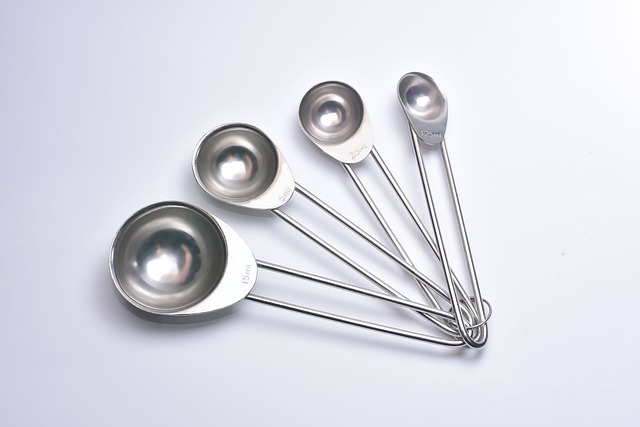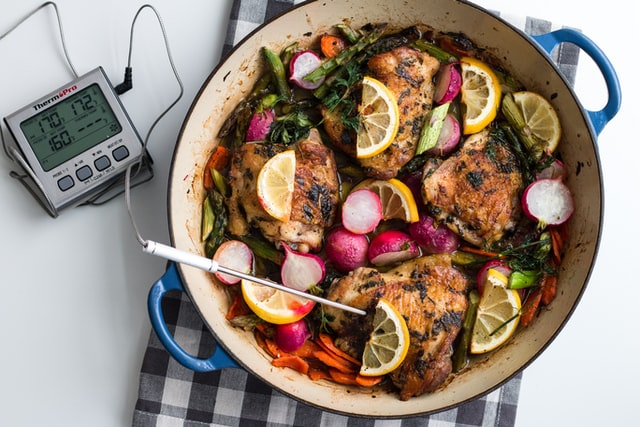Hello there and welcome to part two in our conversation about essential kitchen gear. If this is your first time visiting with us, or if you haven’t caught up with part one in this line-up, you can click here and see what all the fuss is about.
Kitchen Essentials: All About What You Need
If you haven’t guessed yet, this post is all about the must-haves for a solid kitchen experience. There are just certain things that are called for so often in various recipes that finding ways around not having them just becomes tedious. Just go out and stock up on these essential kitchen items, don’t be that guy (or gal) using oversized serving utensils as a makeshift pair of tongs. You need these things. Read on.
Measuring Cups and Spoons
As much as we appreciate—even celebrate—the precision provided by a scale, there are instances when it is either impractical or simply unneeded to weigh out your components. To achieve correct volume measurements, you’ll need measuring cups, both dry and liquid, as well as a set of spoons. These rectangular measuring spoons are not just the most precise pair we tested, but they’re also thin enough to fit into the smallest spice jars.
Rimmed Baking Sheets and Wire Racks
Rimmed aluminum baking sheets aren’t simply for baking. In the restaurant sector, they’re referred to as “sheet pans,” and they’re used for a variety of oven activities, including baking a batch of cookies, crisping up a tray of broccoli, and even roasting a full turkey or bird. Aside from those uses, sheet pans are infinitely useful—for example, spreading out vegetables or tofu to dry before frying, or providing a solid, readily grab-able surface on which to set a pie for baking, cooling, or chilling.
The most adaptable sizes for a home kitchen are quarter-sheet and half-sheet trays. They’re lightweight, durable, and cheap enough that you might want to get a pair in each size. In fact, if possible, have one set for high-temperature roasting and one for baking, as the pans you use for meats and veggies will likely to become a little beaten up.
You should also match your half-sheet pan with a basic wire rack to ensure that your resting meats or cooling cookies have enough air circulation.
Thermometer: Instant-Read
If all you’re doing is cooking easy, forgiving, mostly vegetable-based foods like stews, sautés, and casseroles, you can skip the thermometer. However, if you want to cook any type of meat properly, this piece of kitchen gear is a must. We usually choose one with a long probe for probing into the center of a roast, as well as an easy-to-see digital display.
Metal Mixing Bowls
Do you want to discover why TV chefs use glass mixing bowls? It’s not because they’re superior to the cheaper metal equivalents. It’s purely for aesthetics: metal bowls are overly reflective, making things tough for camera operators. On the other hand, they’re lighter than glass, take up less space, and last longer (and, yes, modern microwaves can handle metal bowls!). If you walk into any restaurant kitchen, you’ll see that the mixing bowls are all metal.
The lesson? Save the glass bowls for the TV chefs and invest in a metal set. Do yourself a favor and try to find a restaurant supply store, you’ll discover that metal bowls are less expensive there than elsewhere. If not, check out discount spots like Ross, TJ Maxx or whatever your local equivalent may be.
A Wooden Spoon
A good wooden spoon is a cook’s best friend, whether it’s for stirring a sauce, tasting a soup, or preparing the creamiest risotto conceivable. It’s not uncommon for true connoisseurs to end up owning a half-dozen wooden utensils in varying shapes and sizes. They’re great for stirring and tasting, but they’re also great for scraping up fond and getting into pot corners. Kitchen gear in its simplest state.
A Solidly-Built set of Tongs
A solid set of tongs is like an extension of your own fingers, which is why we performed a deep dive into identifying the best tongs available. OXO stainless steel tongs set the standard for quality, with solid construction, a locking feature, slip-resistant grips (ever try to grip a pair of stainless-steel-only tongs with greasy fingers?), and scalloped edges. These are ideal for picking up the most-tender stalks of spring asparagus or the largest bone-in pork roast.
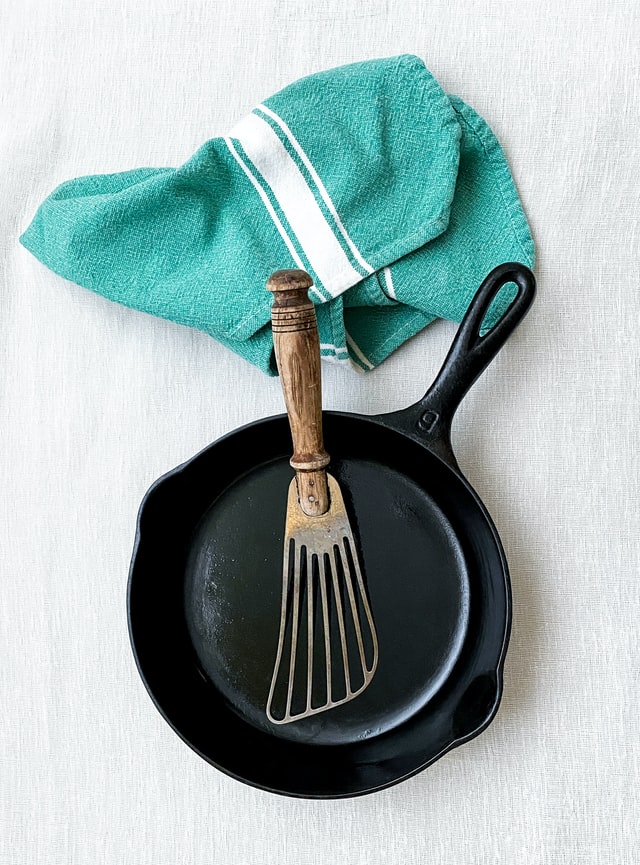
A Slotted Fish Spatula
A fish spatula (yes there is such a thing) is something you’ll find in the repertoire of every professional chef, and it’s one of the most indispensable (and, fortunately, inexpensive) tools in the kitchen. It’s bendy enough to flip the most delicate fish fillets without breaking them, but strong enough to scrape a smash burger off your cast iron skillet without wasting a precious bite. It’s also great for removing extra fat from grilled steaks and chops: Simply remove the meat from the skillet, blot it dry with a paper towel (no need to remove it from the spatula first), and transfer it to a serving plate. The large grooves in the spatula allow oil to drain readily.
We tested several of the best-rated affordable fish spatulas on the market and found the Victorinox Chef’s Slotted Fish Turner to be lightweight and easy to use, gliding gently under delicate meals without disturbing other objects in the pan. Another solid performer is the Wüsthof Pro Slotted Fish Spatula, which is dishwasher safe.
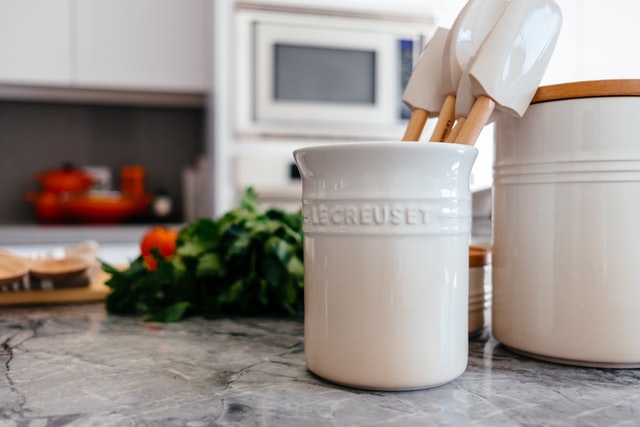
Heat-Resistant Flexible Spatulas
This is not the same as a fish spatula or a broader turner for your nonstick skillet. Instead of twisting and flipping it, you’ll use it to scrape out every last drop of tasty goodness from the inside of a pot or bowl. Most silicone headed spatulas are extremely light and flexible, and the bamboo handles commonly found are easier to hold than silicone ones, which can become slippery over a steaming pot.
A Pepper Mill
Pre-ground pepper simply cannot compete with freshly cracked pepper. You’ll need to grind your own for that warm, fruity flavor, and a pepper mill is the only way to go. I know someone who routinely ground their pepper in a mortar and pestle. Don’t be too cheap to shell out for a pepper mill. Jeez!

A Fine-Mesh Strainer
When producing stocks, sauces, and creamy, smooth soups, you need a tool that can easily remove aromatic bits and pieces. That tool is the simple, plain strainer, which should be rust-resistant, fit tightly over your bowls and pots (look for hooks on the rim that will allow it to do so), and be relatively inexpensive—this set of three will suffice.
There’s almost no other piece of kitchen gear that has the versatility of a strainer. Squeeze out seedless and fleshless citrus juice, poach faultless eggs, sift flour, cook veggies, and more. Of course, your strainer may also be used as a colander for draining pasta and other hot dishes, making it an ideal hot-foods companion to your salad spinner.
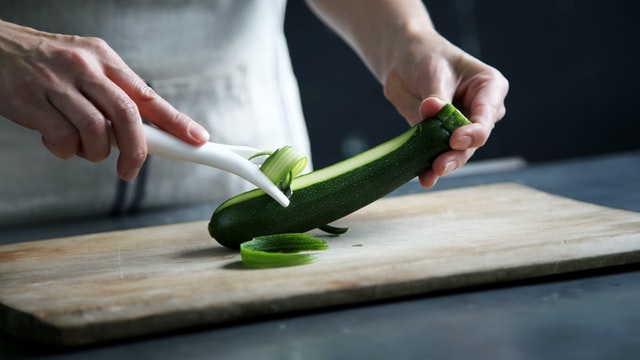
A Vegetable Peeler
Every kitchen gear lineup at least one vegetable peeler, and if you’re a regular reader of this site, you’ll know that our favorite peeler is a Y-peeler. Each of these Kuhn Rikon Y-peelers has a carbon steel blade that stays sharper longer than a stainless steel blade. The broad handle is more comfortable than the slender one found on many swivel-blade types. Because the peelers are so inexpensive ($10 for a set of three), you can quickly replace them when they become dull or rusted. They’re even colorful. What further persuasion do you require?
Wire Whisk
It’s true that using a stand mixer (or a portable electric mixer) makes beating egg whites and whipping cream considerably easier, but if you’re still saving up for one, a good old-fashioned whisk-and-bowl combination works just as well.
For pastry applications, search for an all-stainless structure that won’t transfer off flavors to extremely acidic recipes like jam, Key lime pie filling, or lemon curd. For more general use, a balloon shape with tines that form a fairly open cage can reduce clumping of sauces and batters in the whisk’s crevices. This set of whisks provides both functions at an affordable price.
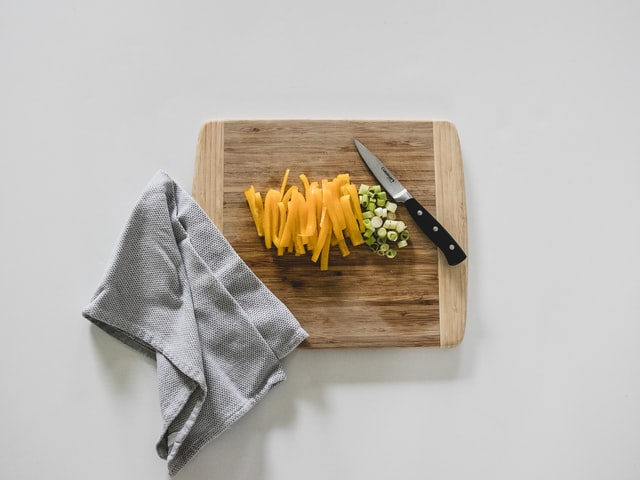
A Paring Knife
A paring knife can’t accomplish much more than a chef’s knife, but it’s the chopping instrument you’ll most likely grab for after your chef’s knife. Its small size and low weight make it a more convenient alternative for little jobs like halving lemons or mincing shallots, or chores that demand more attention to detail. (You’ll surely find yourself using it for other, more unusual purposes—it makes a good cake tester in a pinch.) A paring knife, like a bread knife, does not need to be expensive. In our assessment of the best paring knives, the Victorinox 3.25-Inch Forschner came out on top. It’s reasonably priced, sharp, and easy to hold.
Stay Tuned…
That just about does it for what would be considered essential kitchen gear. What do you think, is there anything we missed that you can think of? Did we include an item that you don’t agree with? Be sure to check out our unofficial part three in this series where we round up some gear that is helpful, but doesn’t make our cut as essential. Click here to jump over and find out more!

